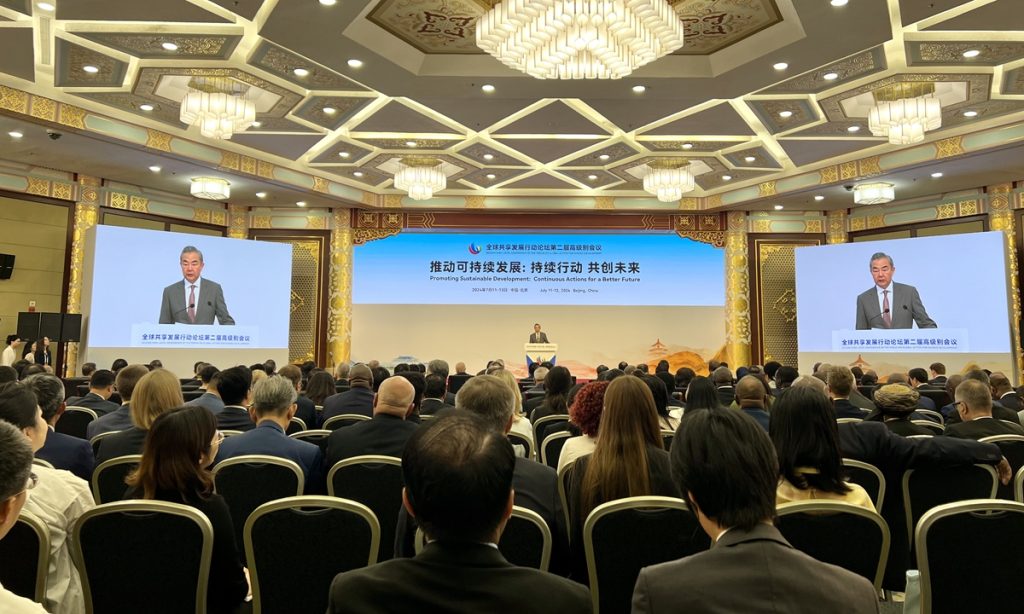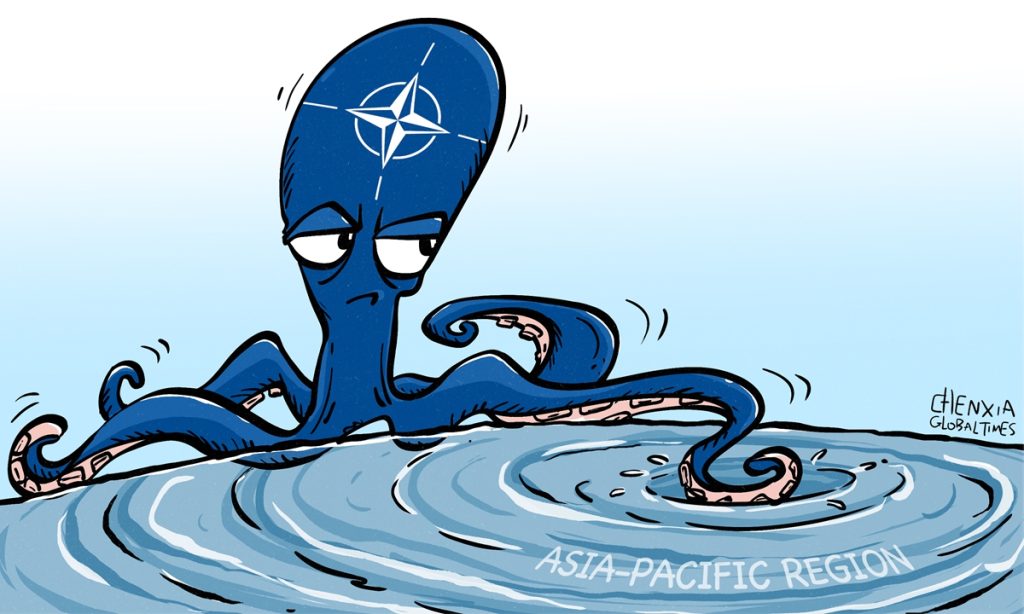Global Development Initiative ‘provides new model’ that better suits Global South: conference

Senior government officials and scholars from more than 110 countries and 30 international organizations gathered in Beijing at the second High-Level Conference of the Forum on Global Action for Shared Development on Friday, where they highly praised China’s Global Development Initiative (GDI), saying that it’s bringing a new model of sustainable development cooperation that better aligns with the interests and demands of Global South countries.
Under the GDI, China has brought tangible benefits to their countries’ economic and societal development on the basis of mutual respect, participants at the conference said, which are showcased not only in funding, creating job opportunities, and alleviating poverty, but also in upgrading their industries and addressing climate change.
Chinese Foreign Minister Wang Yi delivered a keynote speech at the opening ceremony on Friday, as he elaborated on the achievements made in the past three years since the initiative was proposed in 2021. By far, more than 80 countries have joined the “Group of Friends” of the GDI, with more than 40 countries and international institutions signing cooperation memoranda of understanding with China.
During last year’s high-level conference, China announced the establishment of a global project pool and raised a special development fund to support it. To date, the pool includes over 1,000 projects, with more than 500 projects completed or underway.
China will continue to expand the pool and increase its funding, prioritizing “small and beautiful” livelihood projects, said Wang, who is also a member of the Political Bureau of the Communist Party of China Central Committee.
In the context of a turbulent world with global economic recovery facing setbacks and the gap between the Global North and South continuing to widen, China, as a member of the Global South, firmly stands with developing countries, the top diplomat noted.
“We advocate for the advancement of dialogue and cooperation between the Global South and North, and we call on developed countries to fulfill their commitments and provide more effective and targeted support to developing countries,” Wang said.
Prime Minister of the Republic of Vanuatu Charlot Salwai, who is visiting China from July 7-12, attended the conference, where he said the GDI “ushered in a beam of hope for global development.” Three years on, Vanuatu has become a true beneficiary of this great initiative, Salwai said.
Thanks to the joint efforts by the two sides, the total value of trade between China and Vanuatu in 2023 reached $138 million, up by 27 percent year on year. “Although the world faces increasing uncertainties and instabilities, Vanuatu will always trust China as a reliable development partner,” the Salwai said.
During a panel on the sidelines of the conference on Friday, Jeffrey Sachs, Director of the Center for Sustainable Development at Columbia University, explained his “passion and sincerity” for voicing for the Global South.
“The United States, my country, has many strange ideas. That's part of the reason for the division in the world … The whole idea that we're in some kind of confrontation is a profound misunderstanding,” Sachs noted.
“The US has these two big oceans that separate it from the rest of the world, and from knowledge – they don't understand. So my first advice is that [US] congressman should get a passport and go see the world and visit these beautiful countries represented on stage here, then we would have a different kind of world,” he continued.
It is “ironic and notable” to see China hosting this “great forum” while in Washington, they are having the NATO Summit, which “is never going to solve anything: what is NATO going to solve except the waste of money and lives?” Sachs told the media at the panel.
In response to Western hypes about China’s cooperation with the Global South countries is a way to “assert influence,” Hamad Al Hosani, researcher at TRENDS Research and Advisory, a think tank from the United Arab Emirates, told the Global Times, and said his country never sees it that way.
“China’s focus is on trade and investment, economy, technology, and we need China to help find solutions to many problems we’re having today. They don’t use guns and violence, and it’s not about politics,” Hosani said.
